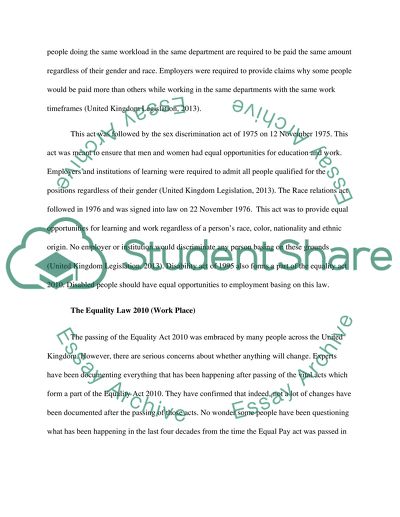Cite this document
(“New Equality Act 2010 Essay Example | Topics and Well Written Essays - 2750 words”, n.d.)
Retrieved from https://studentshare.org/human-resources/1494090-extended-essay-on-the-new-equality-act
Retrieved from https://studentshare.org/human-resources/1494090-extended-essay-on-the-new-equality-act
(New Equality Act 2010 Essay Example | Topics and Well Written Essays - 2750 Words)
https://studentshare.org/human-resources/1494090-extended-essay-on-the-new-equality-act.
https://studentshare.org/human-resources/1494090-extended-essay-on-the-new-equality-act.
“New Equality Act 2010 Essay Example | Topics and Well Written Essays - 2750 Words”, n.d. https://studentshare.org/human-resources/1494090-extended-essay-on-the-new-equality-act.


